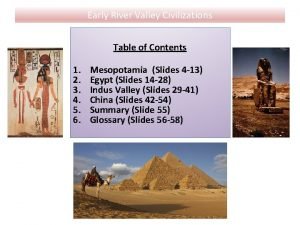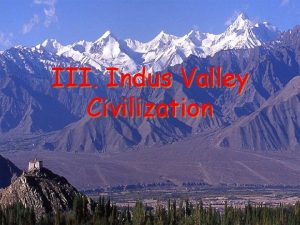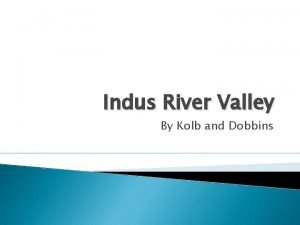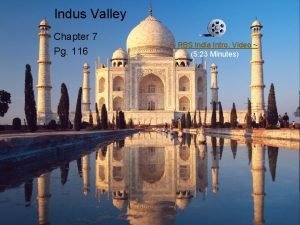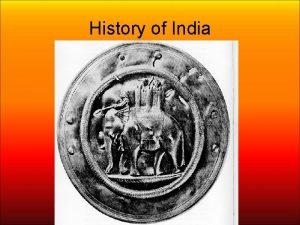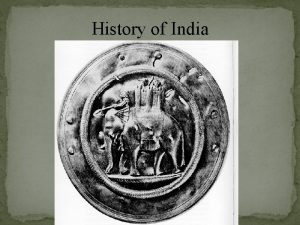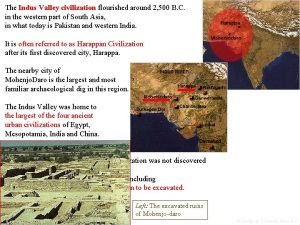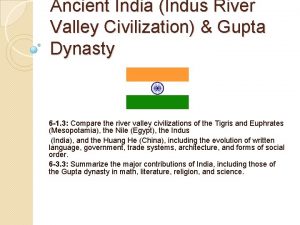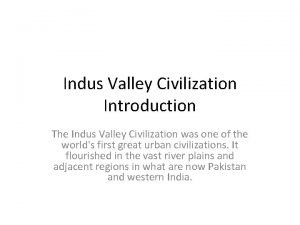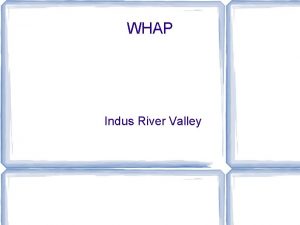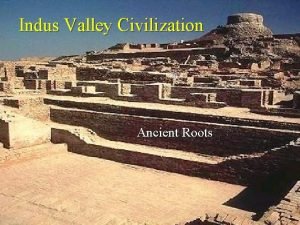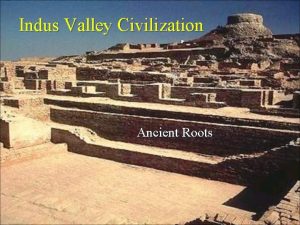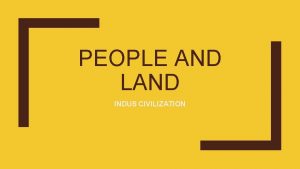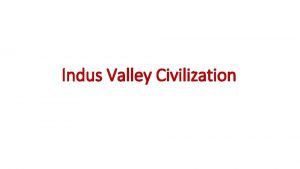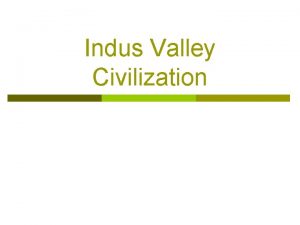Rise of Civilization Indus River Valley Civilization 1500












- Slides: 12

Rise of Civilization Indus River Valley Civilization (1500 – 3500 B. C. ) first Indian civilization: built well-planned cities on the banks of the Indus River Indian culture of today has its roots in early Indus River Valley civilization

Geography of Indian Subcontinent: landmass that includes India, Pakistan, and Bangladesh Separated from the rest of Asia by world’s tallest mountain ranges

Geography of Indian Subcontinent -mountains to north & desert to east protect Indus Valley from invasion -southern India: dry plateau flanked by mountains -narrow ribbon of tropical land along coast

Geography of Indian Subcontinent monsoons: seasonal winds that dominate India’s climate winter monsoons are dry summer winds bring rain, can cause flooding rainfall = unpredictable; frequent droughts, flooding

Indus Civilization Emerges Indus Valley Civilization influenced area larger than did Mesopotamia or Egypt 7000 B. C. = evidence of agriculture & domesticated animals 3200 B. C. = farming villages established along Indus River

Indus Civilization -Indus Valley Civilization also called Harrapan Civilization -included 1000+ settlements -Harappa = capital city located in present-day Pakistan highly organized, planned city still large city today

Indus Valley Civilization Planned Communities Harappa -large capital city -located in present-day Pakistan -highly organized, planned city -buildings made of brick & laid out on a grid system

Urban Planning Harappa and Mohenjo Daro city built on mud-brick platform brick walls protect city and citadel wide streets, rows of houses plumbing & sewage systems

Harrapan Government and Religion rulers based power on belief in divine help close link between religion and political power royal palaces also served as temples

Harrapan Economy -based on agriculture -wheat, barley, peas -engaged in trading -Indus Valley goods traded as far away as Mesopotamia -also traded luxury goods for Sumerian textiles ✦copper, lumber, precious stones, cotton

Language -writing system of 300 symbols scientists still unable to decipher Leisure Time -toys & games suggest prosperity -artifacts found include different types of dice, elaborate toys, board games

End of Harrapan Civilization -decline of Harrapan Civilization remains a mystery begins around 1750 B. C Possible Factors: -flooding or earthquake -change in climate -environmental change caused by human settlement -change in course of Indus River -influx of nomadic Aryan people from central Asia
 Indus river valley civilization cloze reading
Indus river valley civilization cloze reading Indus valley road
Indus valley road Economy of indus
Economy of indus Indus valley civilization period
Indus valley civilization period Indus valley resources
Indus valley resources Indus valley civilization medicine
Indus valley civilization medicine Economy of indus valley civilization
Economy of indus valley civilization Indus valley civilization trade and economy
Indus valley civilization trade and economy Conclusion on harappan civilization
Conclusion on harappan civilization The indus valley civilization flourished around
The indus valley civilization flourished around Mpu hr
Mpu hr Caste system in indus valley civilization
Caste system in indus valley civilization Indus era
Indus era
